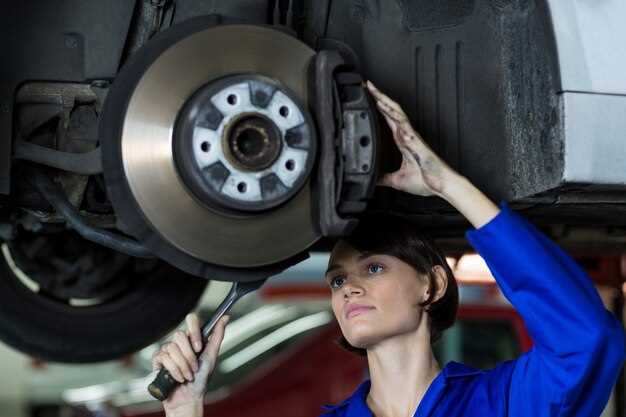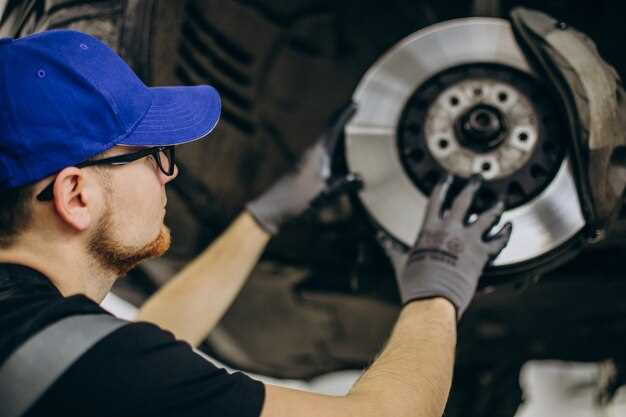
Replacing brake rotors and pads is an essential maintenance task that every car owner should be familiar with. Properly functioning brakes are crucial for safety, and worn-out components can significantly reduce stopping power. Whether you’re a seasoned mechanic or a novice DIYer, understanding the process of replacing these parts can save you time and money while ensuring your vehicle operates at peak performance.
This guide will take you through the detailed steps required to replace your car’s brake rotors and pads. We will cover necessary tools, safety precautions, and detailed instructions to help you navigate the entire process smoothly. With the right approach, you can complete this task swiftly and effectively, boosting your confidence in handling automotive repairs.
By taking the time to learn how to replace brake rotors and pads, you not only enhance your car’s safety but also gain valuable hands-on experience that can serve you in future automotive endeavors. Get ready to roll up your sleeves and dive into this rewarding DIY project!
Choosing the Right Brake Rotors and Pads for Your Vehicle

Selecting the appropriate brake rotors and pads is crucial for maintaining optimal vehicle performance and safety. The first step is to verify compatibility with your specific make and model. Always consult the owner’s manual or a trusted auto parts dealer to ensure you purchase the correct parts.
Brake pads come in various materials, each offering distinct advantages. Organic pads provide excellent stopping power and are quiet, making them suitable for everyday driving. However, they tend to wear out faster. Semi-metallic pads contain metal fibers, offering better heat dissipation and longevity but can produce more noise. Ceramic pads excel in reducing brake dust and providing consistent performance, making them a popular choice for many drivers.
When selecting rotors, consider the type that suits your driving conditions. Standard rotors are sufficient for typical usage, but if you frequently drive in high-performance or heavy-load situations, slotted or drilled rotors may be beneficial. These designs enhance cooling and improve braking performance by allowing gases to escape more efficiently under intense conditions.
Additionally, pay attention to the rotor thickness and material. Thicker rotors generally offer better heat resistance, while those made from high-carbon or composite materials can further enhance performance by resisting warping during heavy braking.
Lastly, consider your driving style and preferences. If you seek better performance and longevity, investing in high-quality pads and rotors from reputable brands is recommended. Look for products with positive reviews and warranties to ensure you are making a sound investment for your vehicle’s braking system.
Tools and Materials Needed for the Replacement Process
Replacing brake rotors and pads requires specific tools and materials to ensure safety and efficiency during the process. Below is a list of essential items you will need for this DIY task.
| Tool/Material | Description | Purpose |
|---|---|---|
| Jack | A hydraulic or scissor jack | To lift the vehicle for wheel removal |
| Jack Stands | Sturdy stands to support the vehicle | To safely hold the vehicle in position |
| Lug Wrench | A tool for loosening and tightening lug nuts | To remove the wheels |
| Brake Caliper Tool | A tool to compress the brake caliper piston | To create space for new brake pads |
| Socket Set | A set of sockets for various sizes | To remove caliper and rotor bolts |
| Torque Wrench | A wrench that measures torque | To tighten bolts to the manufacturer’s specifications |
| Brake Cleaner | A chemical to clean brake components | To remove dust and debris from rotors and pads |
| New Brake Pads | Replacement pads for your specific vehicle model | To restore braking performance |
| New Brake Rotors | Replacement rotors designed for your vehicle | To improve stopping power and safety |
| Grease or Anti-Seize Lubricant | A lubricant to prevent corrosion | To apply on contact points of brake components |
Having these tools and materials ready will help streamline the replacement process, making it safer and more efficient. Double-check that you have everything on the list before starting your project.
Steps to Safely Remove Old Brake Rotors and Pads
Before starting the process of removing old brake rotors and pads, ensure the vehicle is parked on a flat surface and the engine is turned off. Engage the parking brake to prevent any movement.
1. Gather Necessary Tools: Prepare all required tools including a socket wrench, brake cleaner, a C-clamp or brake caliper tool, and a lug nut wrench. Also, have a container for the old brake fluid and rags to clean up any spills.
2. Jack Up the Vehicle: Use a hydraulic jack to lift the vehicle safely. Place jack stands underneath for additional support. Do not rely solely on the hydraulic jack to hold up the vehicle.
3. Remove the Wheel: Use the lug nut wrench to loosen and remove the lug nuts from the wheel. Take off the wheel and set it aside in a safe location.
4. Remove Brake Caliper: Locate the bolts securing the brake caliper to the bracket. Use the appropriate socket to remove these bolts. Carefully slide the caliper off the brake pads. Support the caliper with a wire or bungee cord to avoid stressing the brake line.
5. Remove Old Brake Pads: With the caliper removed, gently slide the old brake pads out of their slots in the caliper bracket. Make a note of their arrangement for installation of new pads.
6. Remove Old Brake Rotor: If applicable, remove any retaining clips or screws holding the rotor in place. Slide the old rotor off the hub. If it’s stuck due to rust or build-up, gently tap around the hub with a rubber mallet to free it.
7. Inspect Components: Once the old rotor and pads are removed, inspect the caliper, bracket, and other components for wear or damage. Clean any rust or debris from the spindle and caliper bracket before installing new parts.
8. Dispose of Old Parts Properly: Place the old brake pads and rotors in a container for proper disposal. Do not throw these components in regular trash, as they may contain hazardous materials.
Following these steps will help ensure a safe and effective removal of old brake rotors and pads, preparing the way for installation of new components.
How to Properly Install New Brake Rotors and Pads
Begin by ensuring your vehicle is safely raised and secured on jack stands. Remove the wheel to access the brake assembly. Identify the brake caliper, which houses the brake pads and is typically secured by two bolts. Use a wrench to remove these bolts and gently slide the caliper off the rotor. Avoid placing excessive stress on the brake line; you can hang the caliper using a bungee cord or similar tool.
With the caliper removed, take out the old brake pads from their brackets. They may be held in place by clips or retaining springs, which also need to be removed. Inspect the rotor surface for any signs of wear or scoring. If replacement is necessary, remove the old rotor by unscrewing the retaining bolts or using a hammer to gently tap it off the hub.
Before installing the new rotor, clean the surface with brake cleaner to remove any protective oil or grease. Once the rotor is ready, mount it onto the hub and secure it with the retaining bolts. Ensure that it is properly aligned and free of debris.
Now, proceed to install the new brake pads. Apply a thin layer of brake lubricant on the backing of the pads and on the contact points to reduce noise and ensure smooth operation. Slide the pads into the caliper bracket, making sure they seat properly against the rotor.
Next, reposition the caliper over the newly installed brake pads. Carefully align it and reinsert the caliper bolts, tightening them to the manufacturer’s specifications to ensure a secure fit. Once the caliper is in place, repeat these steps for the other side if necessary.
After both sides are completed, reinstall the wheels and lower the vehicle back to the ground. Before driving, pump the brake pedal several times to seat the pads against the rotors. This ensures proper brake function and responsiveness. Finally, take your vehicle for a short test drive at low speeds to verify brake performance before resuming normal driving conditions.
Common Issues to Watch Out for During Replacement
Replacing brake rotors and pads can be straightforward, but there are several issues that may arise during the process. Being aware of these common problems can help ensure a smooth replacement and optimal performance.
- Improper Tool Usage: Using the wrong tools can lead to damage. Ensure you have the right size wrenches and sockets, especially for caliper bolts.
- Rust and Corrosion: Inspect the mounting surfaces for rust. Clean any rust off with a wire brush to ensure a proper fit for the new rotors.
- Brake Fluid Leakage: Be cautious about brake fluid leaking when removing calipers. If fluid leaks, it may indicate worn seals that need to be addressed.
- Brake Pads Orientation: Ensure that the pads are oriented correctly, as some pads are designated for specific sides of the vehicle.
- Caliper Piston Resetting: Be careful when compressing the caliper piston. If done too quickly, you might damage the piston or the seals.
- Failure to Bed in New Pads: Not following the proper break-in procedure can lead to reduced braking efficiency. Always bed in new pads according to the manufacturer’s instructions.
- Misalignment of Components: Make sure all components are properly aligned. Misalignment can lead to uneven wear and further brake issues.
Addressing these common issues during brake rotor and pad replacement will enhance the effectiveness of the braking system and contribute to overall vehicle safety.
Tips for Breaking in New Brake Rotors and Pads
Breaking in new brake rotors and pads, often referred to as “bedding,” is crucial for achieving optimal performance and longevity. Here are key steps to ensure proper bedding:
1. Start with Gradual Stops: After installation, begin by driving at a moderate speed of about 30-35 mph. Gradually apply the brakes to come to a stop, without fully engaging them. Repeat this process several times to allow the pads and rotors to start seating properly.
2. Increase Speed and Pressure: Once you have performed several gentle stops, increase your speed to around 50 mph. Apply the brakes firmly but not to the point of locking them up. Each stop should be a bit more aggressive than the last, gradually building up the heat needed for proper bedding.
3. Avoid Abrupt Stops: During the bedding process, refrain from making sudden or panic stops. This helps to prevent uneven wear and ensures that the brake material transfers smoothly onto the rotor surface.
4. Monitor Temperature: As you brake, monitor brake temperatures when possible. The ideal range for bedding is between 400 to 600 degrees Fahrenheit. This heat will help the pads form a layer of friction material on the rotor, improving grip and performance.
5. Finish with Steady Braking: After performing several progressively harder stops, find a safe area to drive and apply the brakes firmly for a longer duration without completely stopping. This helps to create a more consistent layer of pad material on the rotor.
6. Cool Down: Allow the brakes to cool down naturally after the bedding process. Avoid immediate hard stops to prevent thermal shock, which could warp the rotors or damage the pads.
7. Check for Issues: After bedding, listen for any unusual noises and watch for vibrations during braking. If any issues arise, recheck the installation and ensure everything is secured properly.
By following these steps, you will enhance the performance and longevity of your new brake system, ensuring safe and effective braking for your vehicle.














